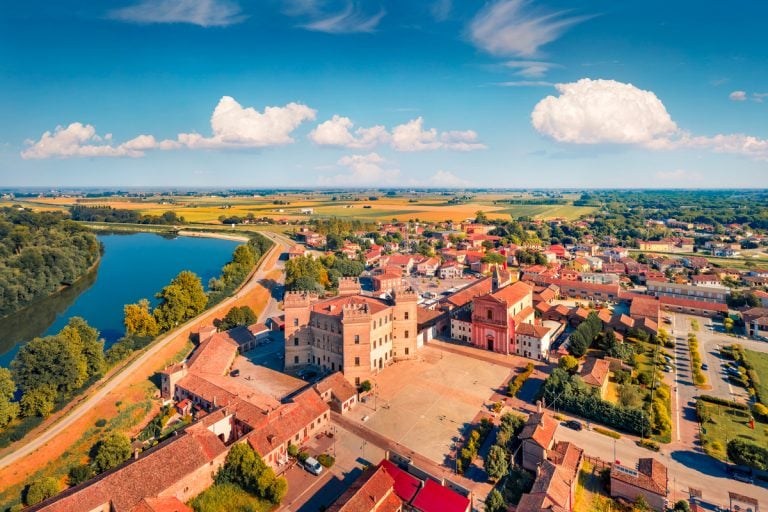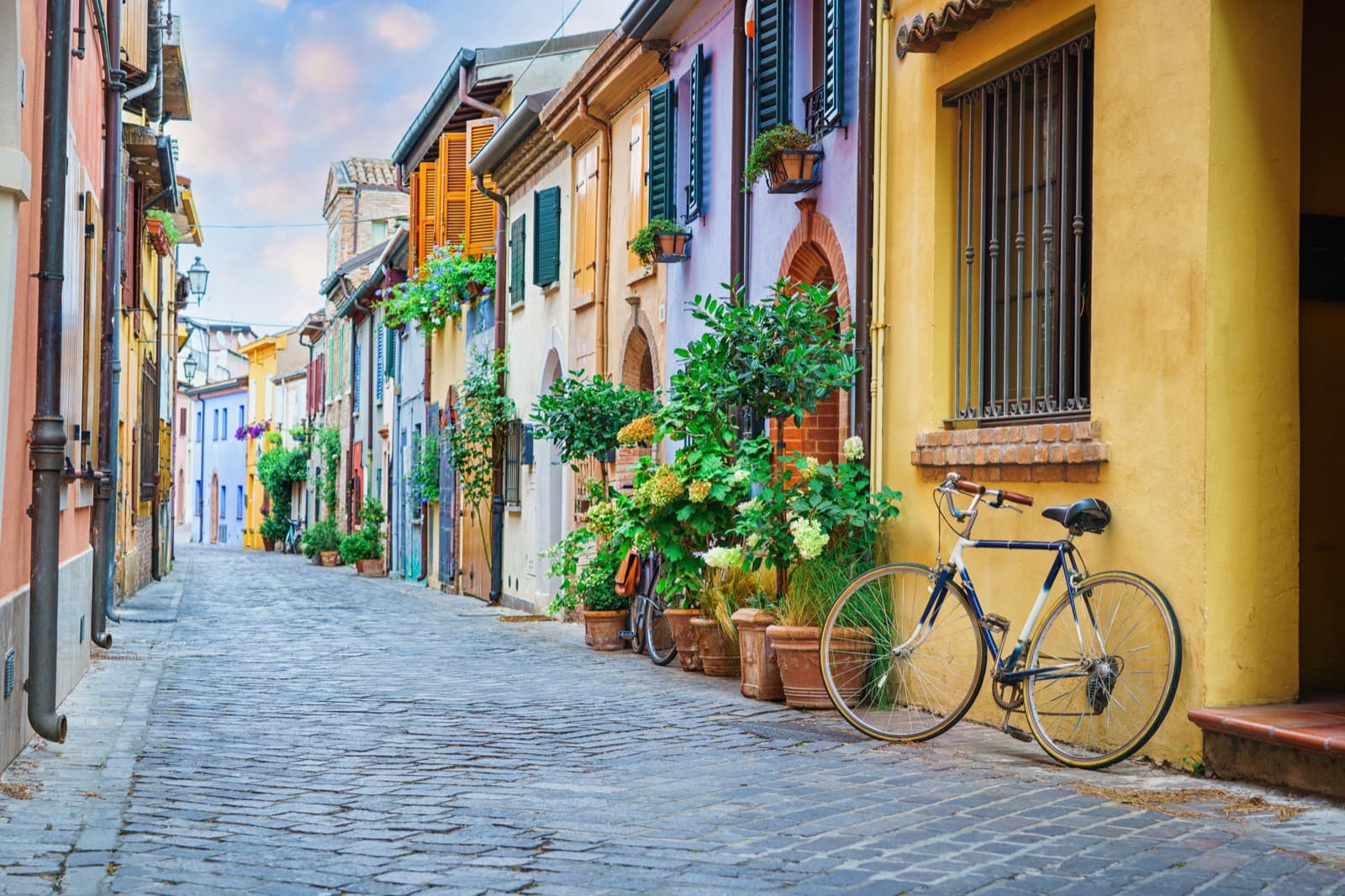It is one of the most long-lived dynasties in Europe. Nearly eight centuries passed from its foundation to its decline.
Some of its exponents are so well-known that their names still resonate today in both history and art history books.
Their rule extended from the city of Ferrara – the first capital of the Duchy – as far as Reggio Emilia and Modena, where the court settled in 1598.
We are talking about the House of Este, who played a major role in Emilian history from the 11th to the 19th century. A noble and powerful family that exerted a tangible influence on these territories and left behind numerous traces of its passage.
We are referring to the palaces, fortresses and castles erected as symbols of power, which represent a fascinating key to understanding the area and a good idea for an art tour. In this article you’ll find a selection of the most important Este residences of the ancient Duchy of Modena and Reggio Emilia.
Ducal Palace of Modena
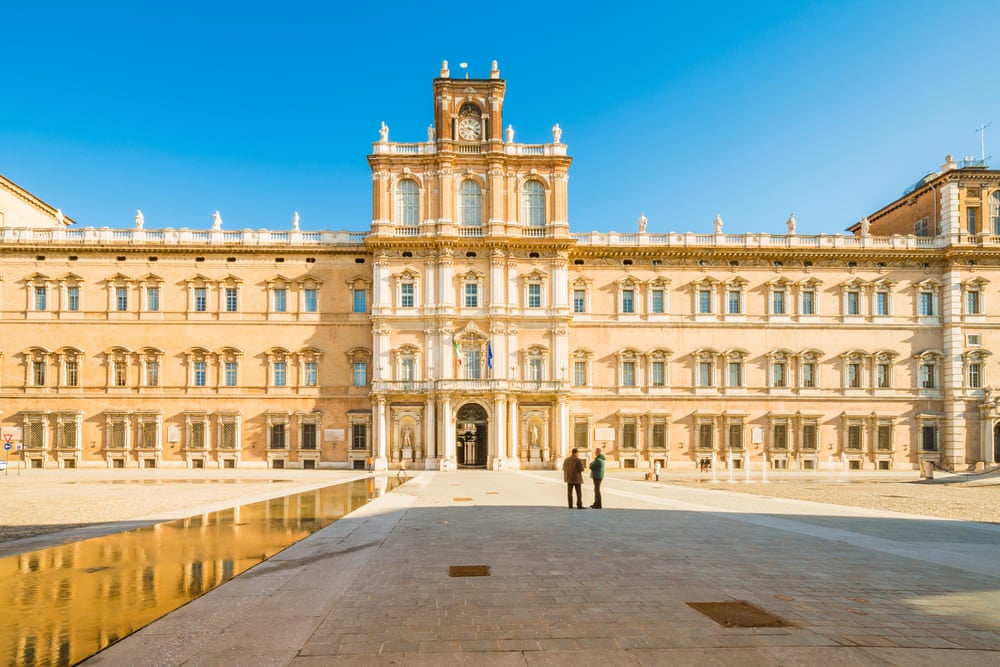
If the Este family had not reigned there, Modena would look quite different today. Certainly the majestic Ducal Palace, today the home of the city’s Military Academy, would not exist.
As with the ducal residence in Sassuolo, the Modena palace was built by order of Francesco I d’Este. He is often referred to as the “protagonist of the Este renaissance” for the central role he played after the capital of the Duchy was transferred from Ferrara to Modena in 1598.
Francesco initiated a series of architectural works with the aim of turning Modena into a city worthy of its name. And he fully succeeded, as the Ducal Palace in Modena is indeed an extraordinary example of Baroque architecture.
Construction of the new Este court began in 1634 to a design by Bartolomeo Avanzini, and Bernini himself is also said to have contributed to the project.
Before entering the Cortile d’Onore, take a minute to look at the imposing façade and its marbles on which the Este eagles stand out. Once inside, you can wander through the rooms of the Appartamento di Stato and their sumptuous decorations. Don’t miss the Salone d’Onore with frescoes by Marcantonio Franceschini, and the glittering Salottino d’Oro.
Ducal Palace of Sassuolo
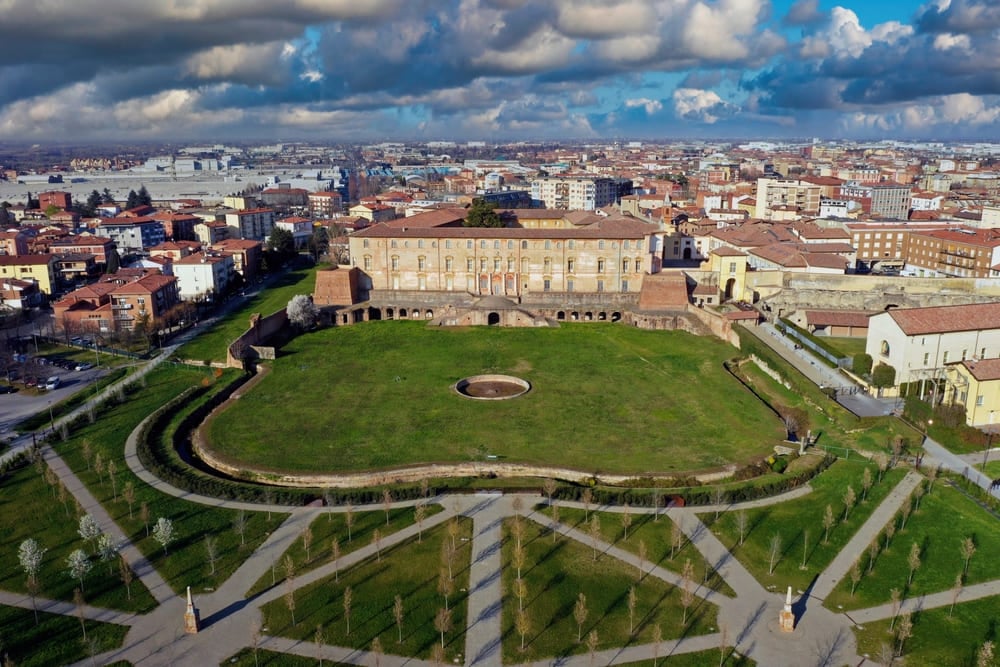
Francesco’s plan to restore his dynasty to its former glory did not involve the famous Modenese palace only.
In 1634 he started renovating a second, equally sumptuous residence. This was the Ducal Palace of Sassuolo, erected on an earlier castle.
What was the purpose of building another palace a few kilometres from Modena’s centre? Francesco had a good plan in mind. He wanted to create a summer residence outside the walls of Modena that would also serve as a seat of power for the house of Este.
Bartolomeo Avanzini’s project gave rise to a grandiose Baroque palace, which can be included in the list of the so-called Delizie Estensi (Este Delights). The Sassuolo residence was set in a natural context, the Secchia valley, boasted a large garden and was splendidly decorated, just like the Delights of Ferrara.
A visit to the Ducal Palace is an immersion in the multifaceted artistic production of the period. You can admire the frescoed rooms decorated with literary, allegorical and mythological scenes by the court’s favourite painters such as Jean Boulanger and Angelo Michele Colonna.
But the palace also houses the Este Galleries, including works by Elisabetta Sirani, Lavinia Fontana and Giovan Battista Crespi.
Don’t forget to visit the spectacular Peschiera, the large adjoining pool once animated by water features.
The Rivalta Palace
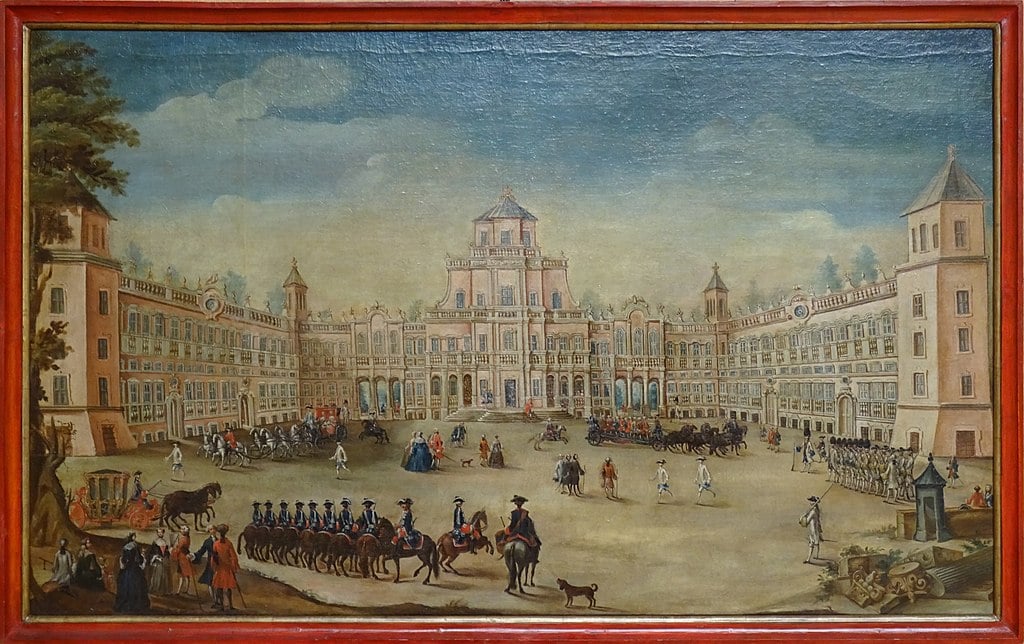
One of the latest among the Delizie Estensi, the Rivalta Palace is located on the outskirts of Reggio Emilia, which was also part of the Duchy.
Reggio’s “little Versailles” was built in 1724 on the initiative of Francesco III d’Este and his wife Carlotta Aglaia d’Orléans who wished to have a residence for holidaying and recreation.
By enlarging an existing villa, the couple created a luxurious residence originally consisting of three architectural bodies and an immense park enlivened by water features.
Unfortunately, the building was repeatedly damaged over time. Today, we can only try to imagine its original grandeur through its remains, i.e. the southern wing and the layout of the former garden. However, the complex is currently being redeveloped by the municipality of Reggio Emilia.
Ducal Palace of Reggio Emilia
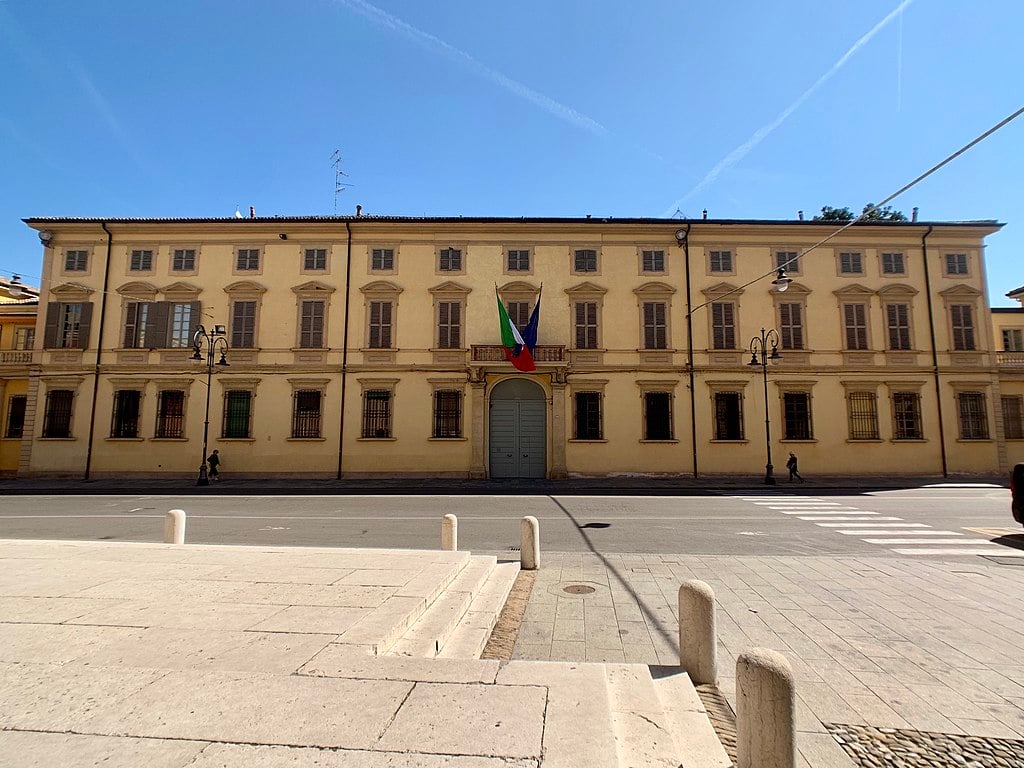
That’s right, Reggio Emilia has its own Ducal Palace too. The building is located in the city centre and was erected in 1783 at the behest of Duke Francesco III on the site of an ancient monastery.
Although not enjoying the same fame as the palaces of the same name in Modena, the Ducal Palace in Reggio was conceived as a site of power too. It actually housed the Governor’s residence and was frescoed by Vincenzo Carnevali and Prospero Minghetti.
Today the palace cannot be visited as it houses the offices of the Province and the Prefecture. Yet, you can admire its elegant neoclassical forms from the outside on Corso Garibaldi.
Spezzano Castle
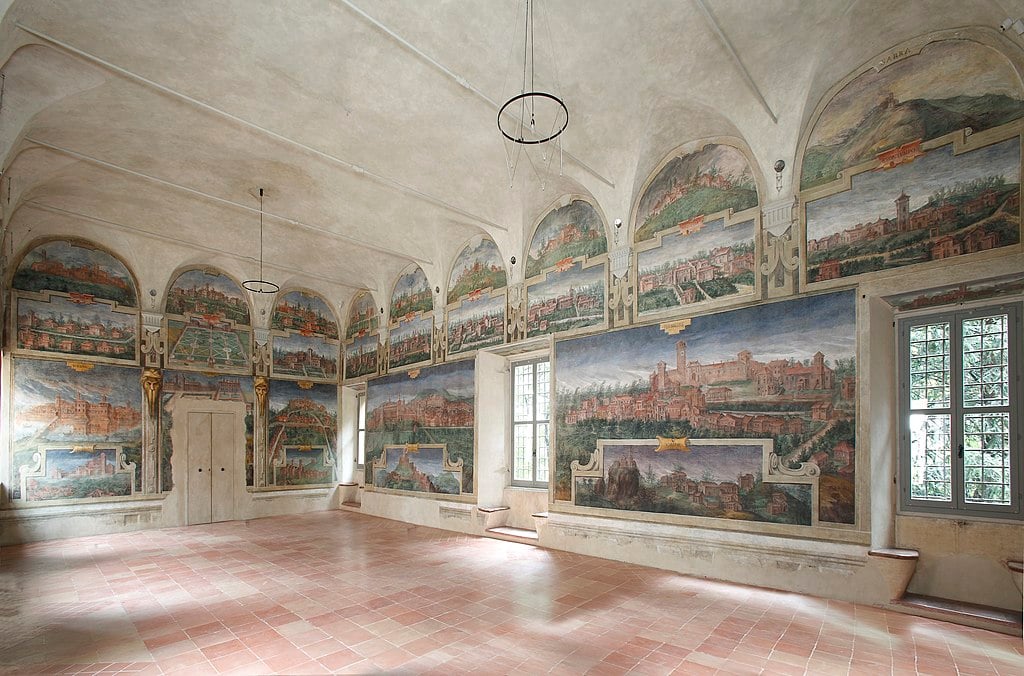
The Este family also ruled over the many castles in the Modena and Reggio area, such as the Spezzano Castle, also known as Rocca Coccapani.
This medieval castle stands on the first hills of Fiorano Modenese, surrounded by a magnificent park not far from the Salse di Nirano Nature Reserve.
It currently hosts the Fiorano Ceramics Museum as well as the city’s vinegar cellar, while it was used as a country residence under the Este rule. More specifically, it was the Pio family from Carpi who turned it into its residence in the 16th century with the consent of the Este family.
The latter acquired the castle between 1599 and 1629, when it was entrusted to the Marquis Guido Coccapani.
Lastly, the castle conceals a small treasure, the Sala delle Vedute room, embellished by Cesare Baglione’s pictorial cycle depicting the towns, castles and towers of the Pio feud.
Author

Maria Grazia Masotti
An eternal dreamer, but I try to stay grounded. I was raised in the countryside but I love big cities. I’m always ready for a trip, as long as it’s sustainable.
You may also like
Le Delizie Estensi: antiche residenze nella Ferrara del ‘500
by Davide Marino /// March 16, 2017
by Davide Marino ///
by Davide Marino ///

Interested in our newsletter?
Every first of the month, an email (in Italian) with selected contents and upcoming events.
